16 Types of Jade Plants to Complete Your Collection
Author: Jen Worst | Editor: Omar Alonso
Review & Research: Jen Worst & Chris Miller
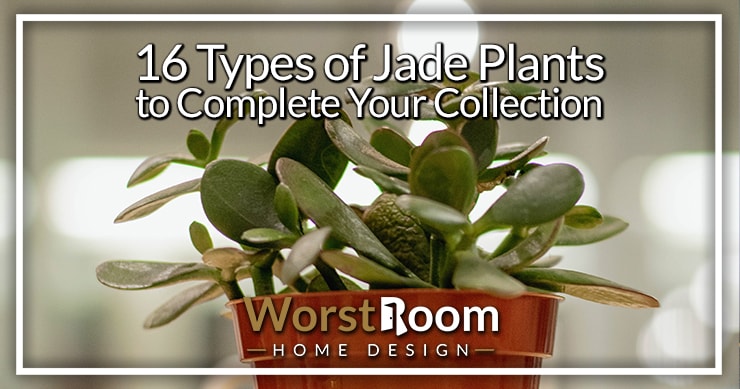
The various types of jade plants are among the most popular houseplants in the world. They're a type of succulent and formally called Crassula ovata that have huge appeal to many for great reason.
The jade plant gets its name from the “jade” gem because of its leaf color and shape. Often associated with prosperity, good luck, and friendship, they're called by other names like dollar plant, money plant, friendship plant, and lucky plant.
The jade plant doesn't need too much care to survive and can tolerate any type of indoor condition. Taken care of properly, they can last a lifetime. They can grow into beautiful large shrubs or they can be cultivated as a bonsai.
Jade plant varieties are characterized by their meaty, green-colored, smooth leaves shaped like spoon heads, while the smaller leaves look like droplets on the thick branches.
The most common jade plant types we're all familiar with typically have oval-shaped, curved leaves that grow upwards and spread out. However, this is only one kind, and we're here to explore many different types of jade plants.
16 Types of Jade Plants
You'll be quite surprised to know that there are over 1,400 jade plant varieties and some are quite rare and expensive too.
There are a range of jade varieties with varying features and have names like true jade, sunset jade, Gollum, Hobbit, etc. Let’s take a closer look at the various types of jade plants.
1) Crassula Ovata
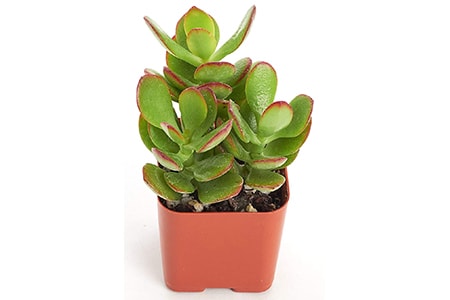
This is the most common type of jade, which is also known as the lucky jade, money tree, and friendship plant.
This hardy and fast-growing plant is considered the original variety. It has jade green-colored, tear-shaped or obovate succulent leaves that grow to around 1.1 inch to 3.5 inches in length.
These types of jade plants can grow plenty of leaves that make it look like a lush shrub. Typically, the money plant thrives best in a bright location, but away from direct sunlight.
These feature dainty, whitish-pink, star-shaped flowers that usually bloom during the winter months.
2) Hummel’s Sunset
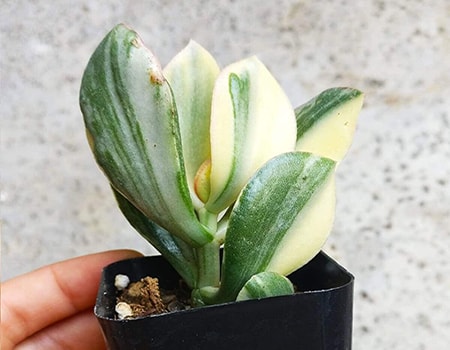
Also simply called “Sunset”, this is one of the most popular types of jade plants. It was awarded the Garden Merit award by the Royal Horticultural Society in the year 1993.
This stunning plant has a thick bonsai-style trunk and spectacular colored foliage of golden yellow leaves with red tips, which is why it is also called the “golden jade tree”.
The colors of the foliage become more intense during the winter months and the golden-yellow leaves of the plant turn to mustard yellow. The sunset jade makes a beautiful centerpiece on your dining table or a living room shelf.
3) Monstruosa
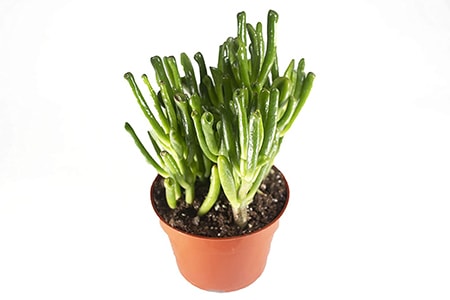
The monstruosa jade plant comprises two varieties, the monstruosa Gollum and monstruosa Hobbit, named after the character from the movie Lord of the Rings. These two varieties of plants can be distinguished by their leaves.
The monstruosa Gollum variety has tubular shaped leaves with a reddish tint, while the monstruosa Hobbit has curled leaves. Even at their maximum height, Hobbits are smaller and shrubbier compared to Gollums.
4) Blue Bird
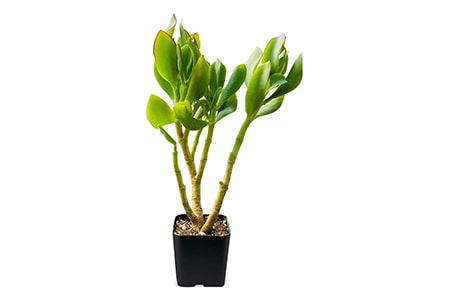
The Crassula arborescens ‘Blue Bird’ Variegata, commonly called "Blue Bird", Silver jade, or Chinese jade is among the most gorgeous succulents and is popular as a balcony plant.
This slow-growing shrub is characterized by its stunning bluish or gray foliage with pink or purple tips, which sets it apart from the other types of jade plants. If you know how to propagate succulents, you'll love these.
The maximum height of the Blue Bird is around 20 inches. It's also drought tolerant, making it easier to manage. The Blue Bird grows very well outdoors in succulent and rock gardens and flourishes indoors as well.
5) Crassula Campfire
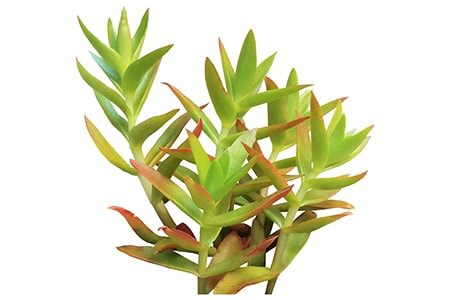
Also called the red pagoda, the Crassula capitella ‘Campfire’ is a stunning plant with propeller-like leaves that can brighten up the room instantly.
The plant looks like a pinkish rosette when it's small; however, as it grows bigger it's shaped like a pagoda and the colors turn into red. The Campfire has a beautiful white flower that blooms in the summer.
6) Crassula Rupestris
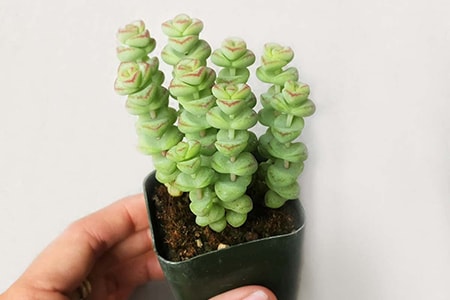
Also called "Baby’s Necklace" or "Kebab Bush", the Crassula rupestris is among the most beautiful crassula hybrids. The plant is characterized by its beautiful greenish-gray and reddish colored triangular-shaped leaves.
The plant looks like a beautiful beaded necklace (one of the types of chains) and is an excellent choice for the décor of your home.
7) Ripple Jade
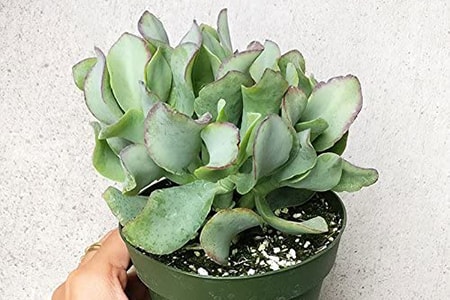
Preferred for its decorative uses, the ripple jade has twisted greenish-bluish-gray leaves. The dwarf variety has a bonsai-like look and it grows to only around 3 feet in height.
The plant has waxy leaves and dense foliage that makes it look dense and bushy. With pruning and trimming, you can easily mistake the ripple jade for a bonsai plant, which perhaps is a bonus.
8) Harbour Lights
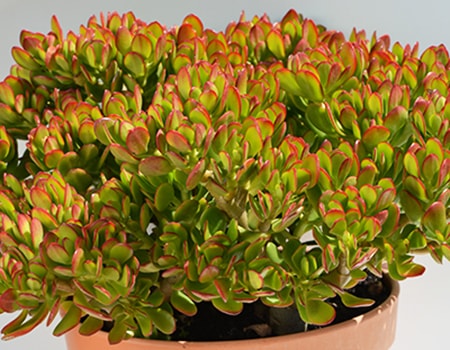
Characterized by its distinct jade green and red coloring, the Crassula ovata ‘Harbour Lights’ is a popular houseplant. The plant has long woody stems and small leaves that turn red during the winter.
In the autumn and early winter, the plant produces star-shaped, pinkish-white colored flowers that give it a radiant, delightful look.
9) Botany Bay
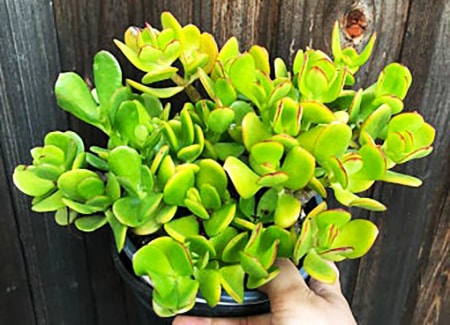
This is a fairly recent variety of the Crassula ovata, which was introduced in 2011. These types of jade plants have characteristic coin-shaped leaves and so it's commonly associated with bringing wealth.
The botany bay is a slow-growing, compact, and bushy shrub that can be grown into different shapes. The plant has jade green foliage and red margins.
The red color of the foliage becomes more pronounced in the winter months and dry conditions. Under ideal conditions, the plant can grow up to 3 feet in height over 5 years.
10) Crassula Ovata Minima
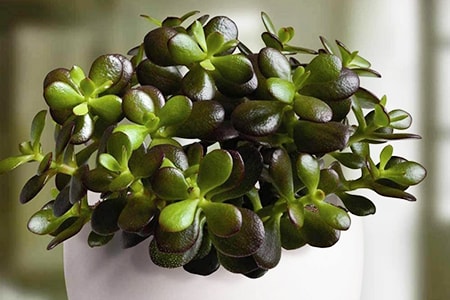
Also known as the miniature jade or baby jade, the Crassula ovata ‘Minima’ is a mini jade with green and red colored pointed leaves.
As a dwarf jade plant, the Minima does not grow over 24 inches. The foliage of the miniature jade is not very dense and has a tree-like appearance.
The plant grows white and pink colored flowers during the winter months. This jade can enhance any home balcony or courtyard and equally, and looks great as a tabletop decoration. It's also popular as a party favor or gift.
11) Crassula Ovata Pink
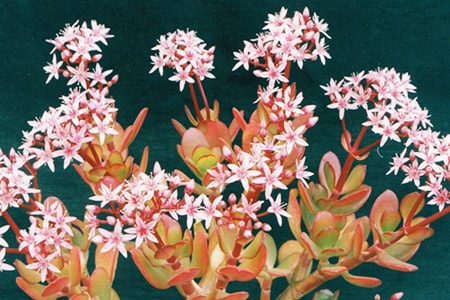
Also known as the ‘Pink Beauty’ plant, it gets its name from its bushy appearance and due to being more pink than green.
Unlike the other types of jade plants having brown-colored stems, the Pink Beauty has pink-colored stems. The plant has obovate leaves, which are quite sparse on the pink-colored stems.
This is among the larger jade species and can grow up to 5 feet in height. The Pink Beauty is characterized by its profuse number of small pink-colored flowers that bloom in the late autumn and early winter months that appear on the tips of the plants and fill its exterior.
12) Portulacaria Afra
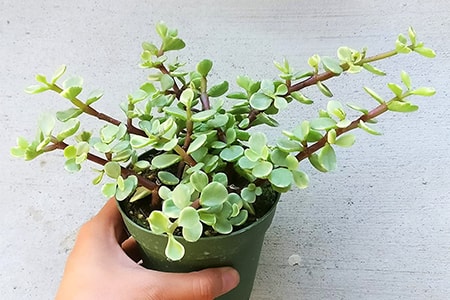
Also called the dwarf jade or porkbush, this decorative plant has woody, red-colored stems with glossy, round, and small green leaves.
A popular outdoor houseplant, the porkbush can grow up to 6 to 8 feet in height after which it starts spreading and so it's advisable to keep it trimmed and shaped so it doesn't get out of hand.
The plant can withstand heatwaves and drought conditions and doesn't flower at all, unlike the other jade plant varieties. In its native habitat, the porkbush is usually eaten by elephants and so it is also called the "elephant bush".
13) Crassula Sericea “Hottentotta”
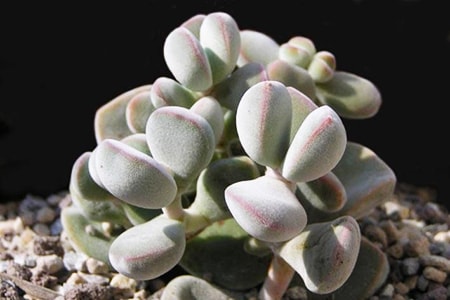
The ‘Hottentotta’ or the dwarf variety of Crassula are an unusual species of jade. This is a small succulent with plump and fuzzy leaves that grow around thin stems that usually grow in columns.
This dwarf jade typically doesn't grow more than 6 inches in height. The plant produces tiny flowers that appear on an inflorescence (elongated flowerhead). They add character to an herb spiral garden, for sure.
14) Crassula Pubescens
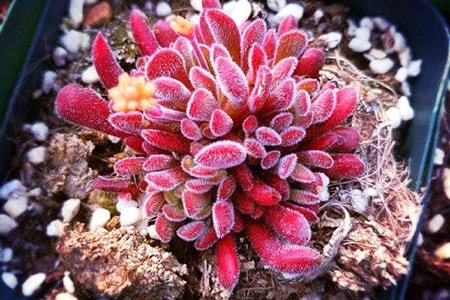
Also called the "bear paw jade", this is a low-growing plant, which is used mainly as a ground cover but grows well in containers too. Initially, the foliage of the bear paw jade is green in color but slowly turns in burgundy when in the sun.
The leaves of the plant are slender and fuzzy and it gets yellow-colored flowers. The bear paw plant grows very compact and spreads very slowly.
15) Crassula Picturata “Tiger Jade”
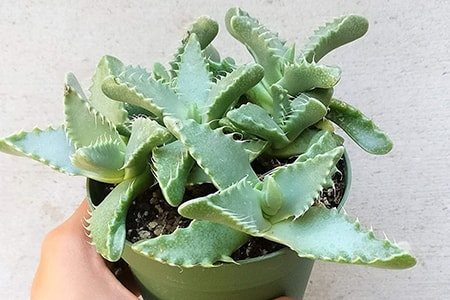
The tiger jade is a compact and neat succulent jade. This short-growing variety has beautiful leaves that form a compressed, pagoda-like structure.
It features pointed, green leaves that are dotted with purple, and the leaves also have a purple-colored underside. The leaves are margined by small fine hairs.
The tiger jade plant feels powdery to the touch, but you can wash this off while watering the plant. When the tiger jade is stressed, it turns a reddish color overall.
However, when happy, the plant grows lovely flowers. The plant’s short height is compensated by its spread that ranges from 6 to 8 inches.
16) Crassula Falcata
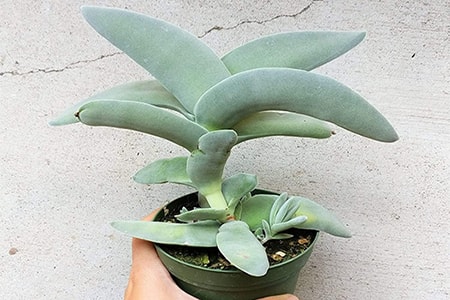
Popularly known as the "airplane plant" or "propeller plant", this jade is characterized by the extraordinary foliage that is twisted and angled in opposite pairs giving it the look of a propeller.
It has grayish-green leaves that overlap and very rarely does it flower. However, when it does, red flowers bloom in clusters at the center of the propellers. Easy to cultivate, it needs bright light and grows well at room temperature.
Which Types of Jade Plants Do You Like?
Because of its simplicity, yet beautiful colors, attractive looks, meager care requirements, and the ability to thrive in harsh conditions, the jade plant is an extremely popular houseplant.
So, whether you’re an expert gardener or a beginner, any of the types of jade plants will be a wonderful choice for you, your garden, and your home interior.



